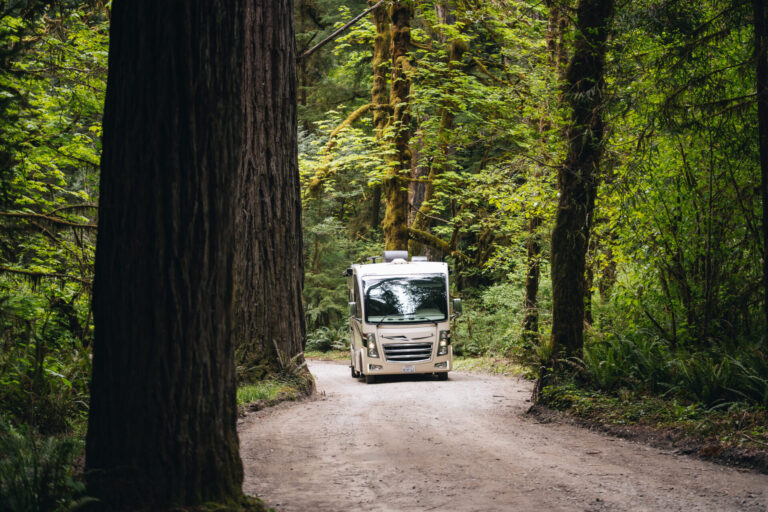
Buying a used RV is a great way to get the rig you’re after without spending a huge sum of money on a brand-new vehicle. Just as with new cars, brand-new RVs depreciate in value as soon as you drive them off the lot; letting someone else take that hit can save you tremendously. However, you do want to be careful when you’re buying a used RV, lest you end up with a lemon.
There are lots of little things that can make a particular RV a less-than-stellar buy. However, nothing will rot away at an RV and turn it into a lemon quite like water where it’s not wanted. Once leaks start, they can do a ton of damage if they’re not stopped — and much of that damage may not be immediately apparent. Floors and ceilings can rot, mold can grow, and if you don’t know how to look for this type of damage, you might not spot it.
If you’re thinking about buying a used RV, it’s important to know how to look at a vehicle for hidden water damage so you don’t end up buying a lemon.
Here are ten helpful tips for inspecting the used RV you want to buy.
1. Never Buy Sight Unseen
If you can’t get to see it before you make the transaction, or worse, if the seller wants to do the transaction without allowing you to take a thorough walk-through, your best bet is to just walk away. It may seem like a good deal, but unless you take a closer look, you’ll never truly know if you’re getting a good vehicle or a lemon.
2. Look Very Carefully For Signs of Mold
Even if there’s no visible water damage in the usual spots like floors and ceilings, mold on the interior of an RV is usually a good indication of leaks or other water problems.
Check the corners of the ceilings and floors, look up and down the walls, and especially check the corners and caulk in the bathroom around the fixtures. Also, open up cabinets and closets and shine a flashlight to see if there’s any mold growing. You’ll often smell it, but if the closets or cabinets feel especially warm (warmer than the rest of the RV), there’s a good chance that there’s mold growing in there.
3. Go Over Every Inch of the Ceiling
You want to look for brown spots, a very visible sign of a leak, as well as parts where the ceiling is bowed or coming down. All of these point to evidence of water damage. Yes, a damaged ceiling can be repaired, but you run the risk of exposing even more problems that need to be addressed when you tear it out. On a lemon of an RV, it’s typically not worth the expense.
4. Do a Close Inspection of all the Floors
This is especially the case where they meet the walls. As with the ceiling, brown spots are never a good thing to see. Also, as silly as it sounds, jump up and down in a few spots, especially around the kitchen and bathroom where water is used the most. The floors should all feel stable and sturdy; too much give could indicate rotting.
5. Look Under the Exterior Trim and Check the Screws
Any visible corrosion or rust could be an indication that water is starting to get in. If the screws still look clean and painted, the RV is probably in good shape — in that particular area, anyway.

6. Open Up and Look Inside all the Exterior Panels
Everything should look clean and dry; you don’t want to see anything corroded or rotting on the inside or around the cut-away.
7. Test the Walls
Push with a fair amount of force on the exterior walls all around the RV. There shouldn’t be too much give to them.
8. Carefully Give the Roof a Thorough Inspection
Look at all of the caulking to make sure everything is sealed tightly. You’ll want to look not only around the skylights and vents but around the entire perimeter of the RV. Old, blackened, crumbling, or moldy caulk could be a sign that water is getting in and creating a lemon of an RV.
9. Check that the Roof is Stable
Walk around the roof (carefully!) and make sure it feels sturdy and stable beneath your feet. If there’s too much give, it’s probably rotted.
10. Buy Your Used RV From a Reliable Reseller or Get a Professional Inspection
A reliable reseller or professional inspection can save you from an enormous headache. This is especially the case if you’re a first-time buyer of a used RV or if you don’t trust your lemon-detecting abilities.
Buy Smart Out There!
There are some great buys on some well-cared-for used RVs out there, but there are also a fair share of lemons. And unfortunately, water damage and other problems are not always readily apparent.
Knowing how and where to look on an RV to uncover signs of damage is an important skill to have if you’re in the market for a used RV. Remember, a used RV might look like a great deal, but if it ends up being a lemon, you’ve just wasted your money.
Have you ever purchased a great used RV? Or was yours a lemon? Do you have any lemon-sniffing tips? Tell us in the comments!
Looking for even more RVing tips and tricks — both during the purchase process and for your first camping excursion?
Here are just a few RVshare blog posts to help you out.
